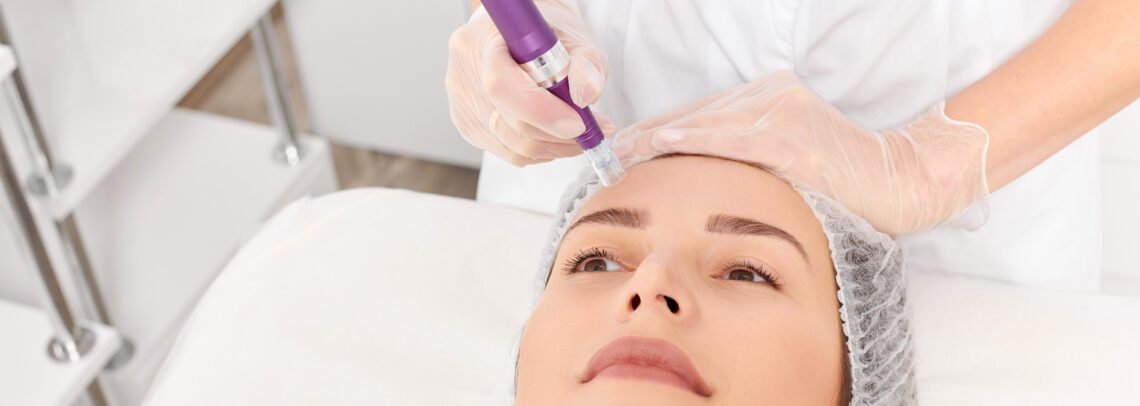
Non-invasive cosmetic procedures have proven great success with the shortest recovery periods. Such treatments like microneedling don’t carry irreversible severe side effects. However, authentic medspas do require expert’s supervision and guidance to perform all cosmetic procedures. Not only to achieve 100% accuracy but also for, cases of emergencies.
A lot of things could go wrong during a microneedling timeline – from allergic reactions to triggered hives. So, an expert clinician being present is quite crucial for the safety and well-being of the clients.
However, even with all safety measures – certain outcomes are out of control. So, to have a better idea of what you’re about to undergo, keep reading. Reading this blog will give you helpful insights about microneedling and make the real picture clearer for you. Just in case, you change your mind.
Certain skin types and skin conditions are not suited to undergo microneedling treatment. So, before you book an appointment, make sure your skin is on-board.
To put it in a better way, not all skin types can tolerate microneedling treatment. Especially, sensitive skin type, skin with hives, skin affected by eczema, psoriasis and other severe skin conditions. Including:
So, ensure with your dermatologist if your skin is ideal for a microneedling treatment. If they are doubtful, reconsider undergoing the microneedling treatment.
It is important to rectify your dietary and hydration patterns before finalizing a microneedling treatment. Because when the needles puncture your skin, it is done to trigger collagen production. Collagen is nothing but protein.
So, when the needles are inserted, your skin must have plenty protein to stimulate collagen production. Sometimes, people who lack nutrition may face scars when doing the same. So, make sure that your diet is filled with protein. Make a routine of drinking 3 litres of water, every day.
Before going to get your skin micro needled, have a detailed chat with your dermatologist. Doctors tend to restrict blood-thinning medicines and anti-inflammatory drugs. Both have different purposes. Firstly, if you have a bruise, it’ll bleed a lot more when you’re on blood thinners. So, instead of stimulating collagen production, the wounds go deeper – causing injury.
Secondly, anti-inflammatory drugs are a big no-go. Because it ceases all inflammations, causing the recovery period to slow down and not resulting in effective outcomes.
Most people exfoliate to clean their pores deeply. So, when you exfoliate prior to microneedling sessions, your pores are clean. Therefore, the treatment outcome will be far more effective. However, the ideal time to exfoliate is at least 3 weeks before the microneedling treatment. Don’t exfoliate right before the session, it may make your skin sensitive.
No matter how great a cleanser you’ve got, it’s time to go. After the microneedling procedure, your skin will remain sensitive. It feels more like sunburns. It may also appear as bruised. Any harsh cleanser touching your pores may trigger redness and inflammation. So, consult with your dermatologist and get a gentle cleanser for regular use. But don’t wash your face immediately after the treatment. Wait for 4-5 hours before using the cleanser. Gently pat your skin dry. Only use your hands, abandon towels for a few days.
When you know you have a microneedling session booked for Friday, don’t get the same area waxed on Wednesday. Hair removal often irritates skin, causing inflammation, redness and rashes. So, making such a tender area vulnerable to microneedling for 30 minutes is not a safe idea. Instead, book hair removal sessions a week prior to microneedling session to be on the safe side. If you’re unsure about the booking process or timing, visit a trusted medical spa where experts professionally perform microneedling treatments for easy solutions.
When you’ve undergone a microneedling session, your skin may be affected by several adversities. Including:
So, you must adapt to a new skincare routine to guard the delicate nature of your skin, at the moment. Speak to a dermatologist and they’ll provide a wonderful routine of gentle products that are absolutely necessary.
Most of our serums consist of retinol which is also a retinoid. Our skincare consists of various products with retinoids including eye creams, serums, and more.
Not before, not after. Keep all retinoid/retinol products away from your routine during the timeframe of the treatment. Even better, ask your dermatologist for a timeline to avoid retinol. It affects the healing process before and after microneedling treatment and weakens skin by thinning the barrier present.
The ideal count is 6-8 sessions with bi-yearly touch-ups. To go above that will translate to a very thin skin barrier. Doing it too often could lead to hyperpigmentation and that’s exactly the opposite of what you want. With microneedling, always remember, less is more. Or be ready to face scars, slow healing and pigmented spots.
If major changes are your aspiration, go for more intensive cosmetic procedures. Microneedling is a simple procedure that creates tiny bruises to trigger collagen production. Methods like this develop results over time, not in a day. When consulting with a dermatologist, you’ll be given an estimate of the number of sessions you’ll require. Only look for huge results and changes, by the end of the count. Especially, not after the first session.
Read More:
5 Key Benefits of Microneedling Treatment for Rejuvenated Skin
How effective is microneedling for hair growth?
Before You Go
Before bidding goodbye, we’d like to add a couple more cents to make your microneedling sessions the most effective. These include:
With the best secrets out of the bag, we’ve nothing left to gatekeep. We’ve put this blog together to help you navigate better before and after the microneedling treatment. Let us know if you have further queries regarding microneedling. We’re happy to help!
© Copyrights 2025 Pure Perfection MedSpa. All rights reserved.
Powered by DevZeo